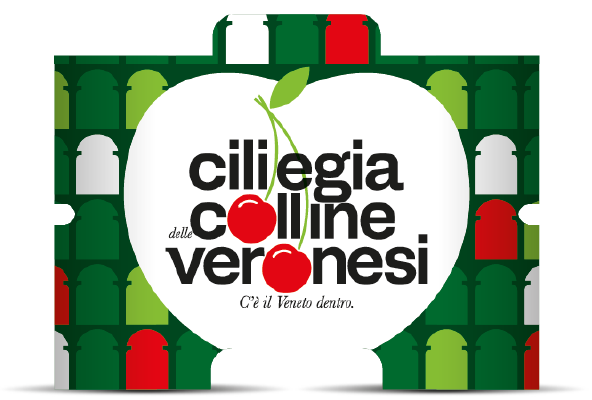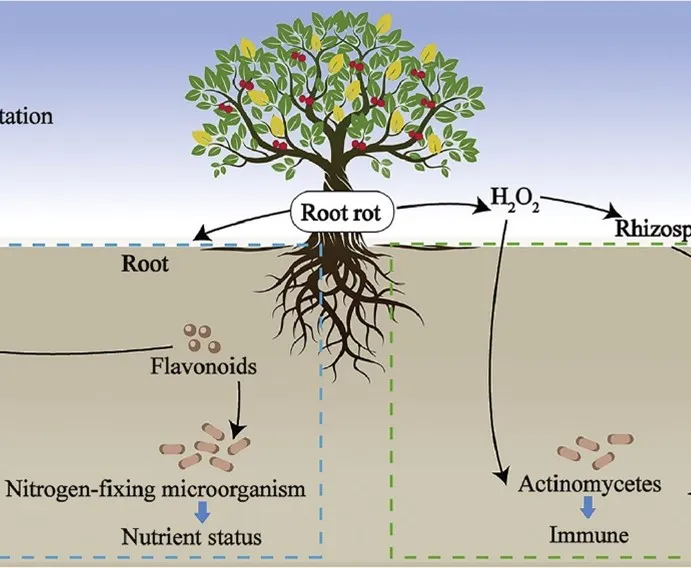Mitigating climate change? Here’s the 4.0 system protected and powered by agrivoltaics. Interview with Giampaolo Dal Pane on SoleD’Oro solutions.
50% water savings, shading protects fruits from the increasingly scorching summer temperatures, farmers can gain solid additional income from energy sales and reduce costs through self-consumption, especially now with the rise of electric equipment—harvest carts, sensors, robots—and crucially, production can be safeguarded from extreme weather events, including snow or frost, thanks to the ability to reduce temperature fluctuations by a few degrees.
These are all the benefits of dynamic agrivoltaics, photovoltaic systems installed over orchards that, thanks to the latest innovations—tilted, mobile panels that “track” the sun—can overcome the challenge of reduced light for plants.
The agro-energy breakthrough
The benefits and positive effects of this agro-energy choice based on symbiosis—a concept more fitting than integration—are listed for Cherry Times by Giampaolo Dal Pane. The administrator of Dal Pane Vivai and president of Dorì International has been involved for over 10 years in the study and testing of coverings, photovoltaics, first-generation agrivoltaics, and today, dynamic systems.
This wealth of knowledge is shared with Eco The Photovoltaic Group, Idromeccanica Lucchini, Azienda Agricola Zoli, the partners of Sole D’Oro. This network of companies enables offering a consulting and services package to all agricultural entrepreneurs interested in energy transition and protecting crops from the negative effects of climate change.
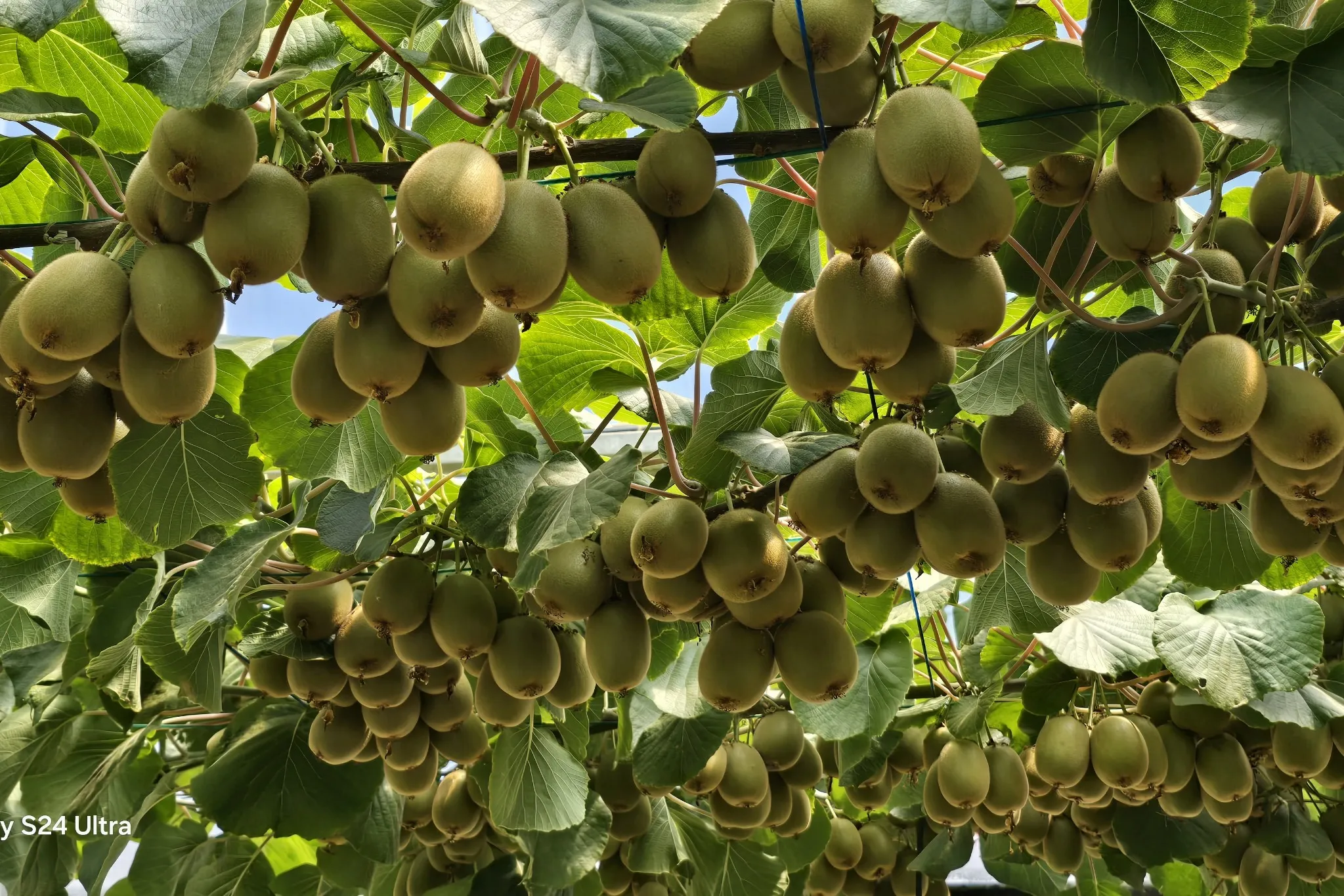
Dal Pane’s decade of experience
Dal Pane’s field-tested experience spans at least 10 years, where he has explored challenges but especially the benefits of coverings and agro-energy, starting with yellow-fleshed kiwifruit and the latest ongoing test with cherries.
“A trial we currently assess positively, thanks to the comparison with uncovered plots that suffered weather damage compared to the test area with the photovoltaic installation. The panels and underlying protections safeguarded the crop and enabled energy production.”
These are the first results of work to be showcased directly in the field during the Agrivoltaico in Tour event—scheduled for Thursday, May 8 and Friday, May 9 at Società Agricola Montazzo in Castel Bolognese, Ravenna Province (click here to register).
On this occasion, visitors can tour Dorì yellow-fleshed kiwi installations protected with various types of coverings.
The Meda® cherry trials
To understand today’s evolution, it’s useful to trace this innovation journey with Dal Pane: “Dorì began with covered systems 10 years ago. The first was in Calabria, specifically Corigliano, in 2015 with half a hectare dedicated to yellow kiwifruit.
In the comparison, the covered area immediately highlighted the challenge of low light. Conversely, in 2017 we started in France, and that system is working well. The key is ensuring the necessary light, so agrivoltaics must evolve from photovoltaics in that the structure must first and foremost account for the underlying crop!”
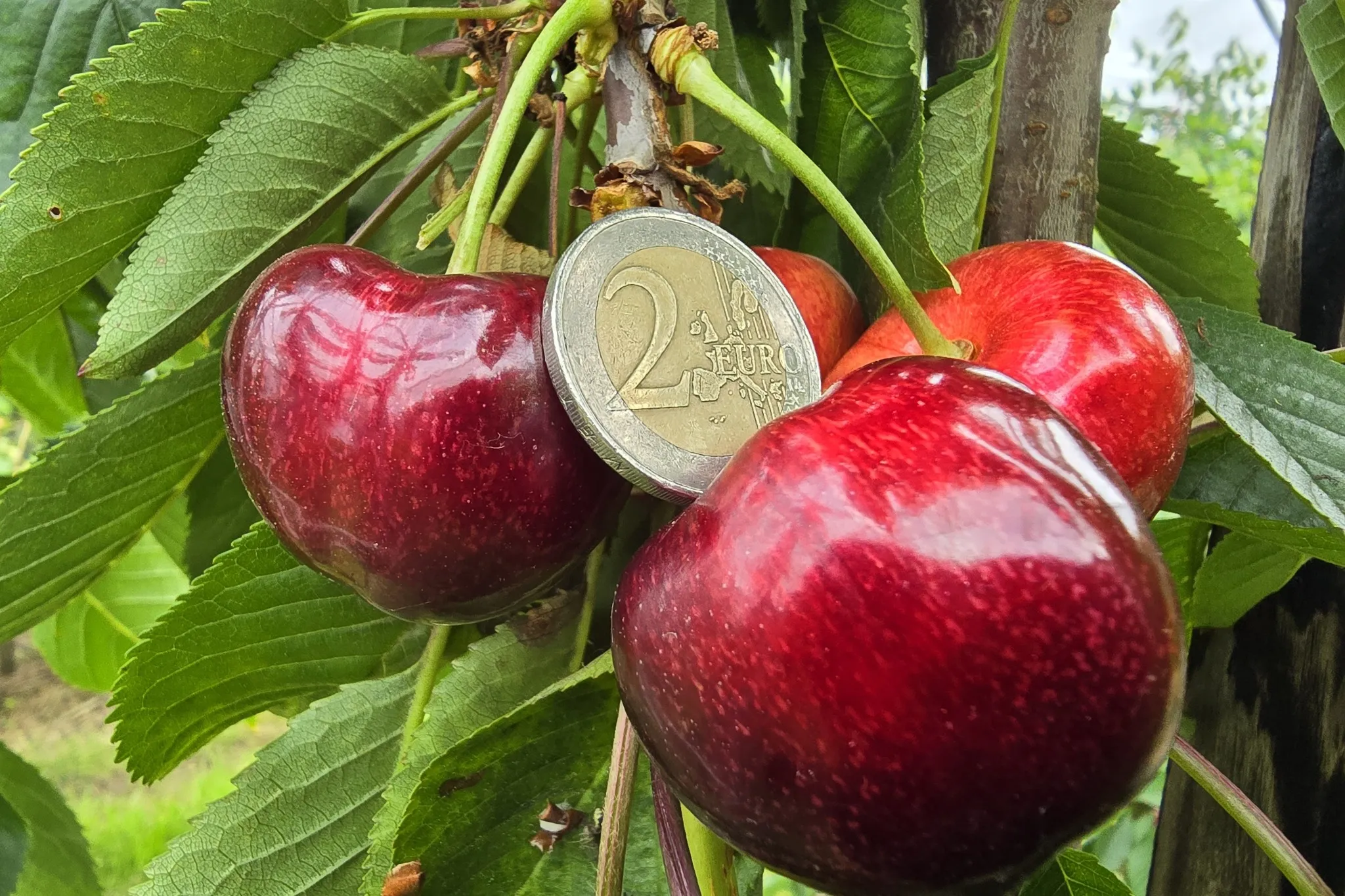
“This is the central step in agrivoltaics, where the crop is studied to adapt the structure.”
Study and expertise are needed to avoid compromising the investment. “At Sole D’Oro, we started trials with adjustable panels that can tilt to follow the sun’s rays. At the same time, they can be adjusted as coverings when there’s bad weather and to protect the plant.”
Protection and agricultural resilience
This is multi-level protection. “We also use and combine plastic and rainproof tarps for complete protection. This shields us from heavy rain. It’s been raining for a month, and many crops have been hit. Underneath are cherries of Californian origin, the revolutionary Meda® series, for which Innovation Fruit holds the exclusive rights in Europe.
They’re not closed greenhouses, but they perform some greenhouse functions. They protect from rain and wind.”
Here, Dal Pane reveals another positive consequence of this setup. “In recent days, we had to carry out a foliar treatment, and I had no issues. The covering allows some tasks to be done in strong winds and rain.”
It saves working hours, treatments can be carried out even in bad weather, and harvesting is easier too.
The role of cold and technology
Cold? “We protect ourselves much more easily, we’re between 2 and 3 degrees. A concrete example: one morning a few weeks ago, the temperature was -3°C, and inside the structure, it read -0.8°C.
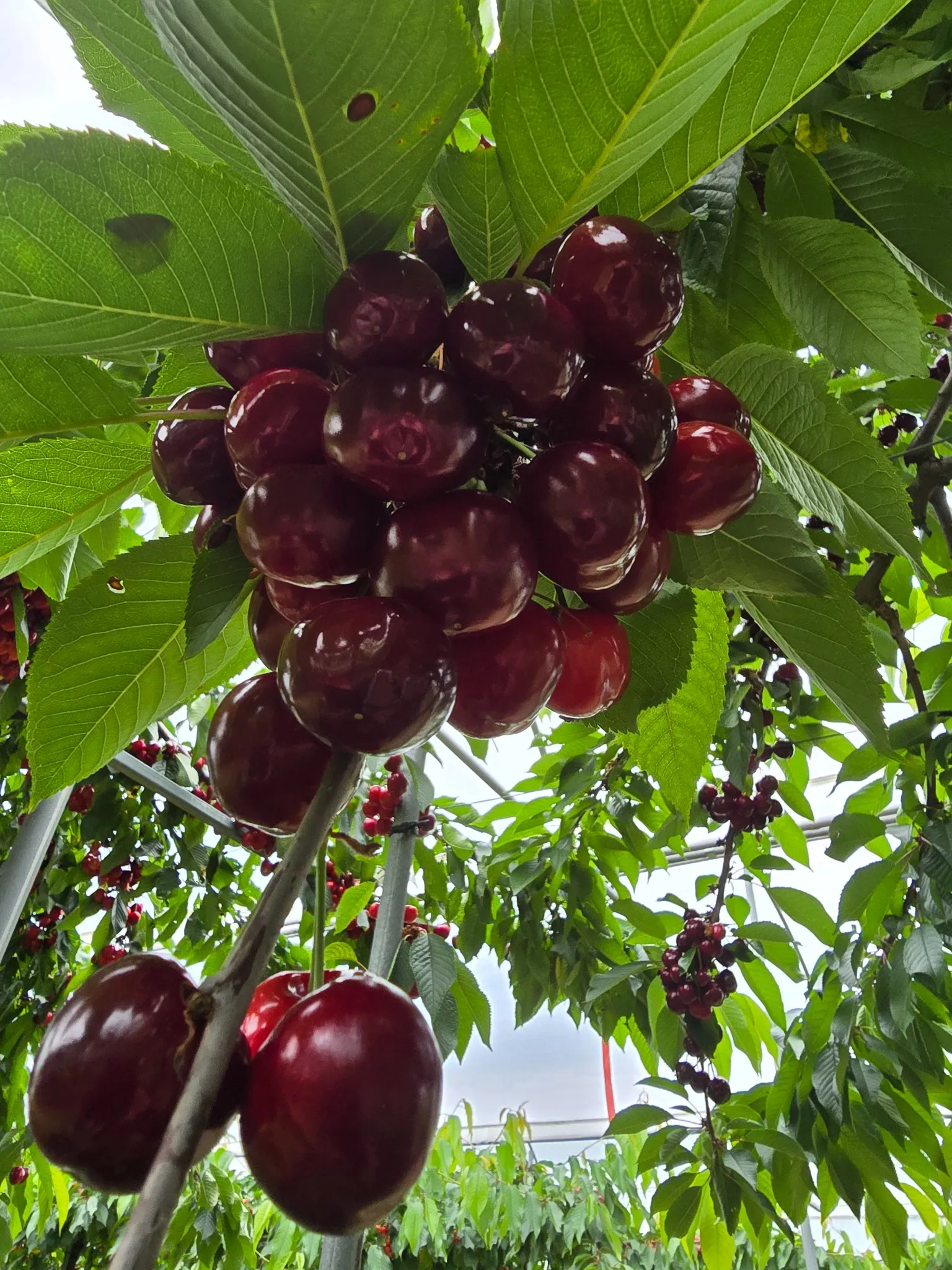
A significant step forward with agrivoltaics for achieving industrial-type fruit growing and product certainty.”
A key point: “Production swings undermine companies’ competitiveness.” This is where sustainability ties into economics.
Here, the entrepreneur refers to kiwifruit: “We lost 70% of production, with bacterial canker and die-off, leading to the loss of many market shares to, for example, Greece. We were the top producers after China, which still produces for self-consumption, at least for now.”
Managing plant diseases with agrivoltaics
The covering and agrivoltaics: “They allow better disease management: under these systems, we don’t use copper-based treatments, we don’t need them, and we drastically cut water use by up to 50%.
Additionally, plants are shielded from direct sun, preventing leaf dehydration and reducing stress.” Just the passage of a cloud can cause “rapid heating, but if the plant is shaded, dehydration is reduced compared to direct sun exposure.”
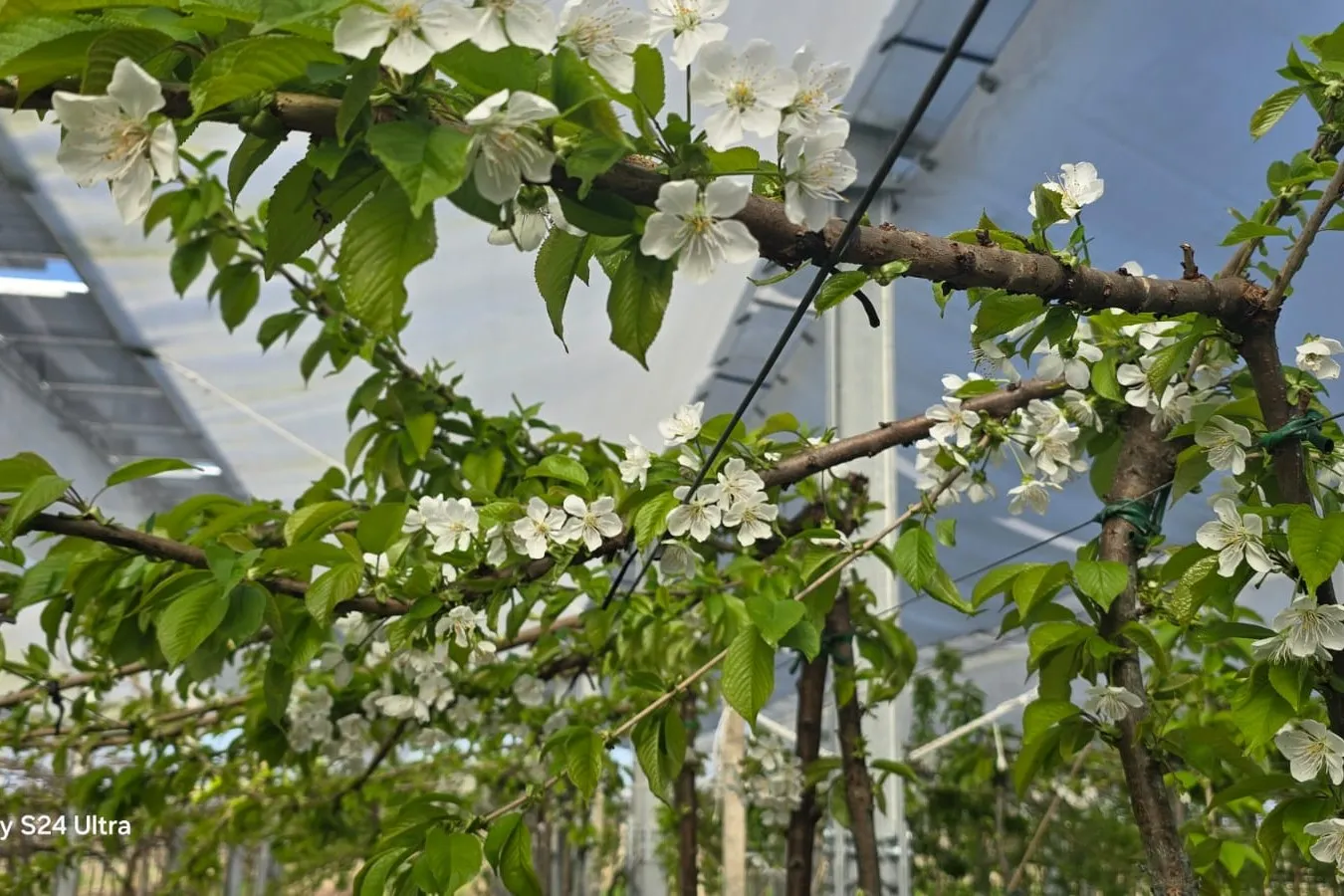
Light management is key in agronomy. “We’ve run tests with yellow kiwifruit and know that beyond 32–33% shade, fertility starts to drop; with green-fleshed kiwi, fertility drops above 20% shade.”
Damage reduction and investment intensity
So far, flowering in photo-agrivoltaic fields has been preserved compared to other areas. “Even in bad years, damage is reduced, but we aim to eliminate losses.
Note: these systems must be insured, because with the force of a tornado (two years ago in Alfonsine, winds exceeded 200 km/h (about 124 mph)), nothing survives, and the initial investment per hectare is significant: €80,000–100,000 for rain protection, much more for agrivoltaics.
There’s also discussion of various solutions, such as outsourcing energy production to a third-party company, with the farm receiving a fixed benefit per unit of land.”
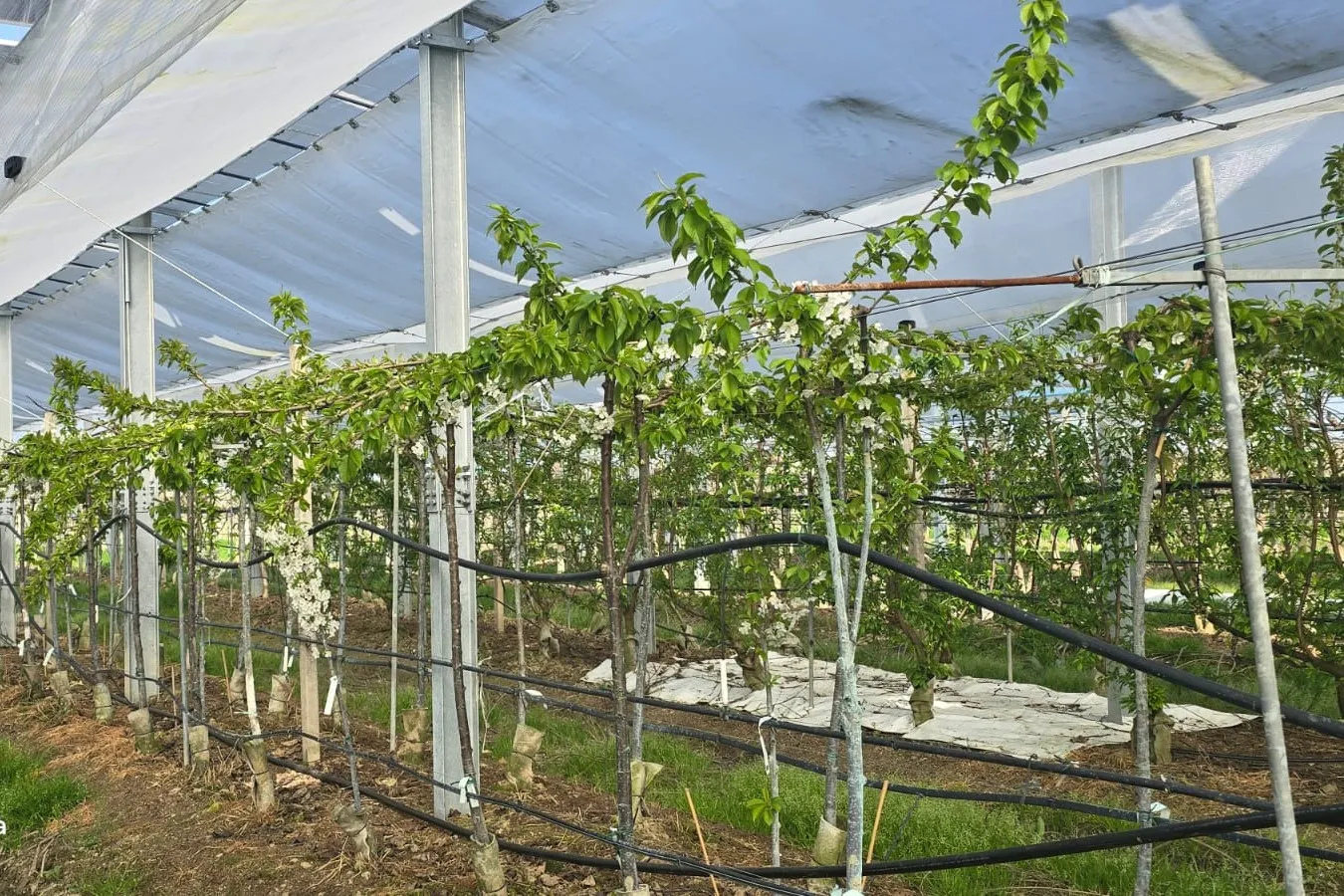
Toward smart orchards
An important step: “We are now also trying to automate as much as possible. In 2026, we will start building the first systems.”
These are smart and 4.0 orchards, where technology is designed to increase revenue, reduce operating costs, and above all improve and safeguard production. Major goals that Sole D’Oro pursues with diverse but converging expertise, aiming to make farms resilient and industrialized.
Cherry Times - All rights reserved










